
Destination
13:13, 26-Jan-2019
Chinese Renminbi banknote scenery: Potala Palace
Updated
14:59, 26-Jan-2019
By She Jingwei
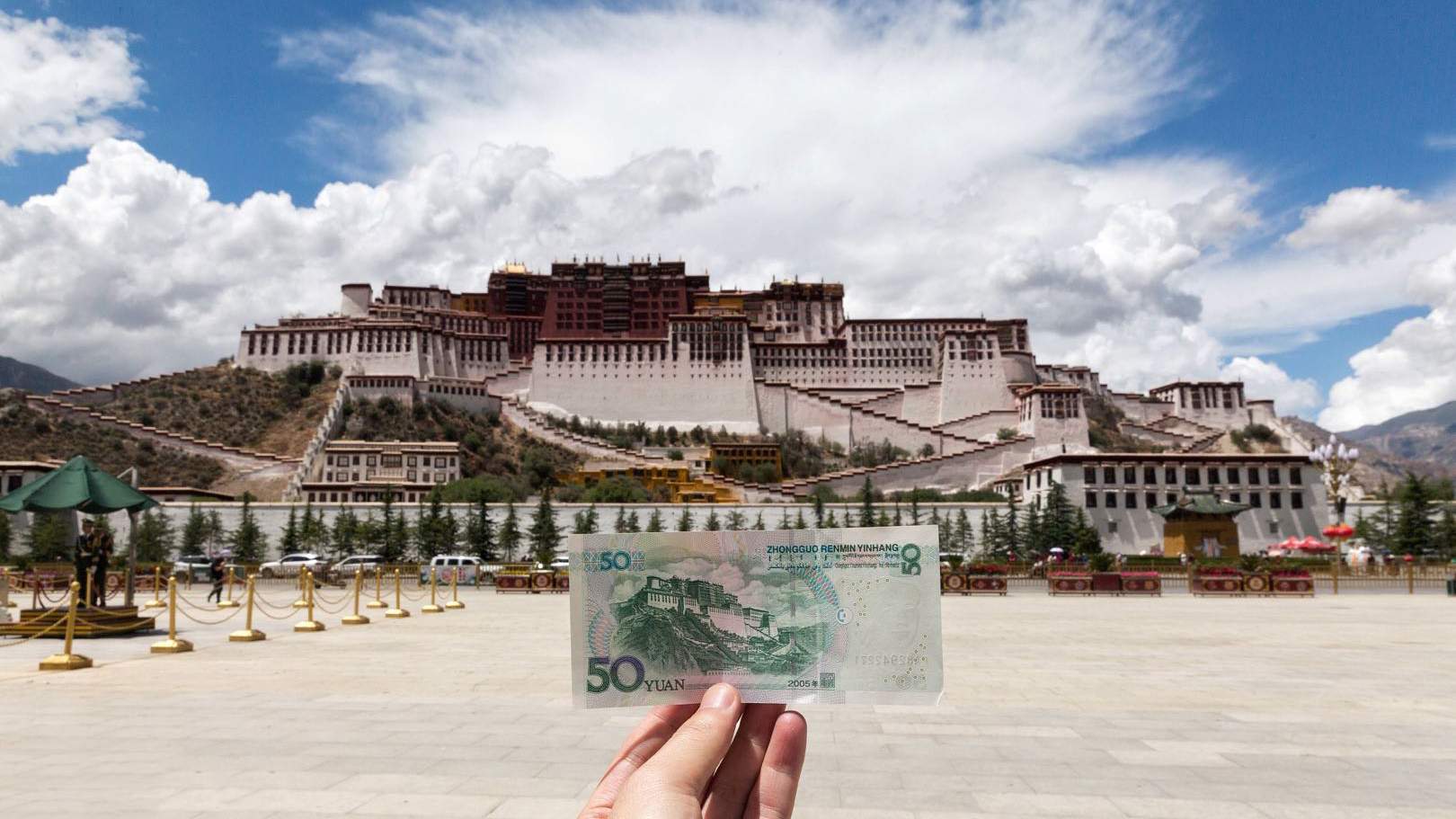
The iconic scene on the back of the Chinese 50-yuan banknote is the Potala Palace. This magnificent 1,300-year-old palace is located in Lhasa, capital of southwest China's Tibet Autonomous Region and has stood for centuries as a testament to Tibetan Buddhism. Noted as one of the iconic landmarks in China, this site has attracted thousands of pilgrims from home and abroad every year to pay homage.
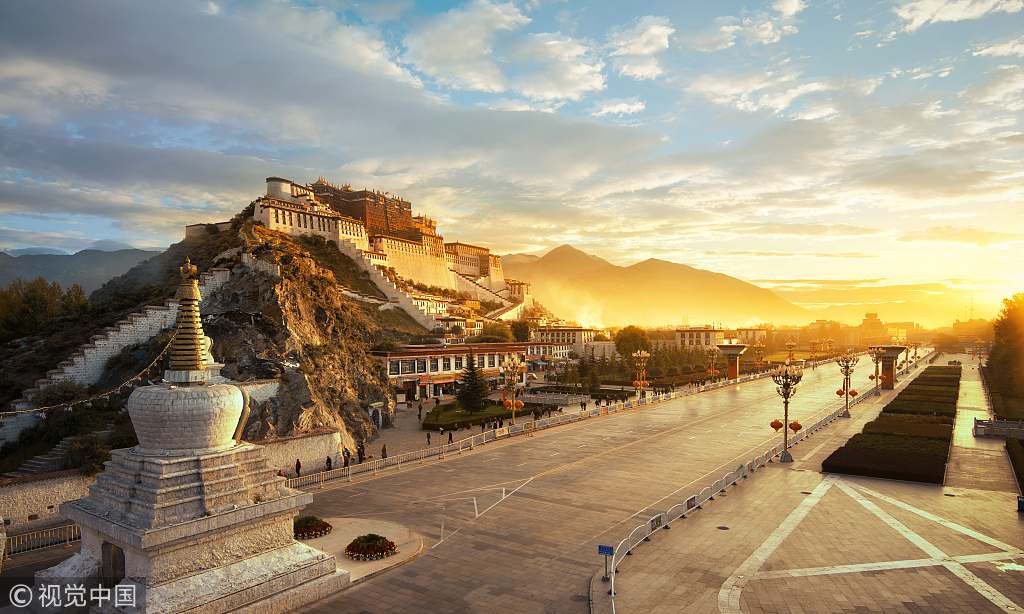
The Potala Palace at dusk. /VCG Photo
The Potala Palace at dusk. /VCG Photo
Ranked as a World Cultural Heritage site in 1994, this palace has long been regarded as "a bright pearl inlaid on the roof of the world."
The unique architectural style of the Potala Palace
The Potala Palace is a Tibetan style complex. The layout of the palace includes two parts: The White Palace on the rooftop and the central Red Palace. The White Palace offers a more personal look into palace life, while the Red Palace is completely devoted to religious study and Buddhist prayer.
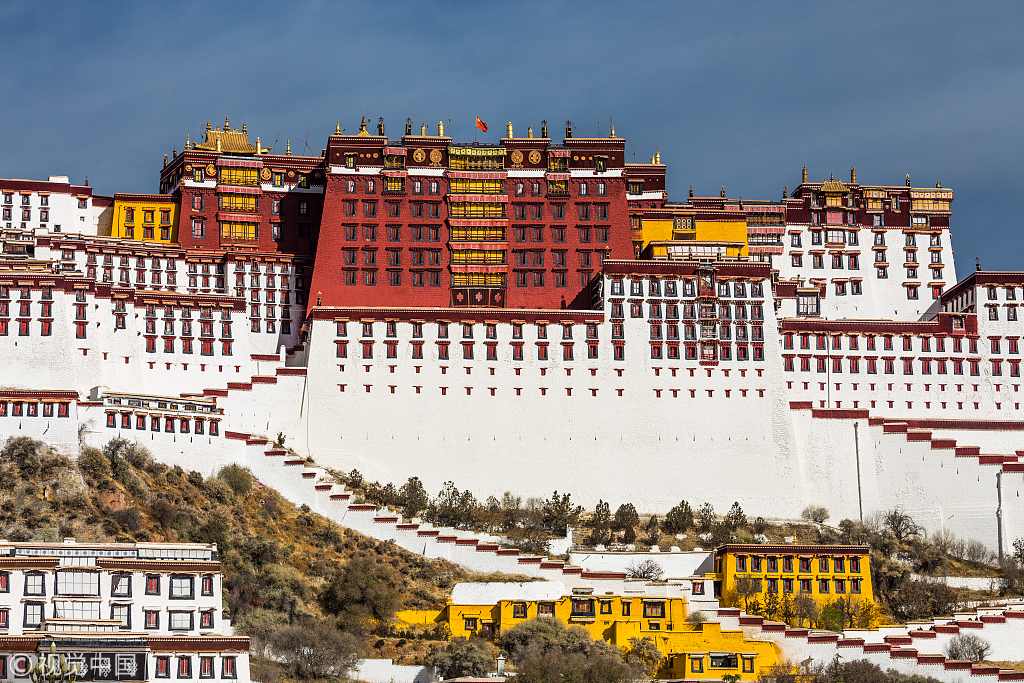
The unique architectural style of the Potala Palace. /VCG Photo
The unique architectural style of the Potala Palace. /VCG Photo
There are different styles of palaces and long corridors with splendid furniture and elegant settings in the White Palace. In addition, many unique Buddhist paintings and frescoes line the walls.
The Red Palace consists of a complicated layout of different halls, chapels and libraries on many levels with an array of smaller galleries. The colorful frescoes and paintings illuminate the inner structures surrounded by the figures of the Buddha, making it a must-visit building for tourists.
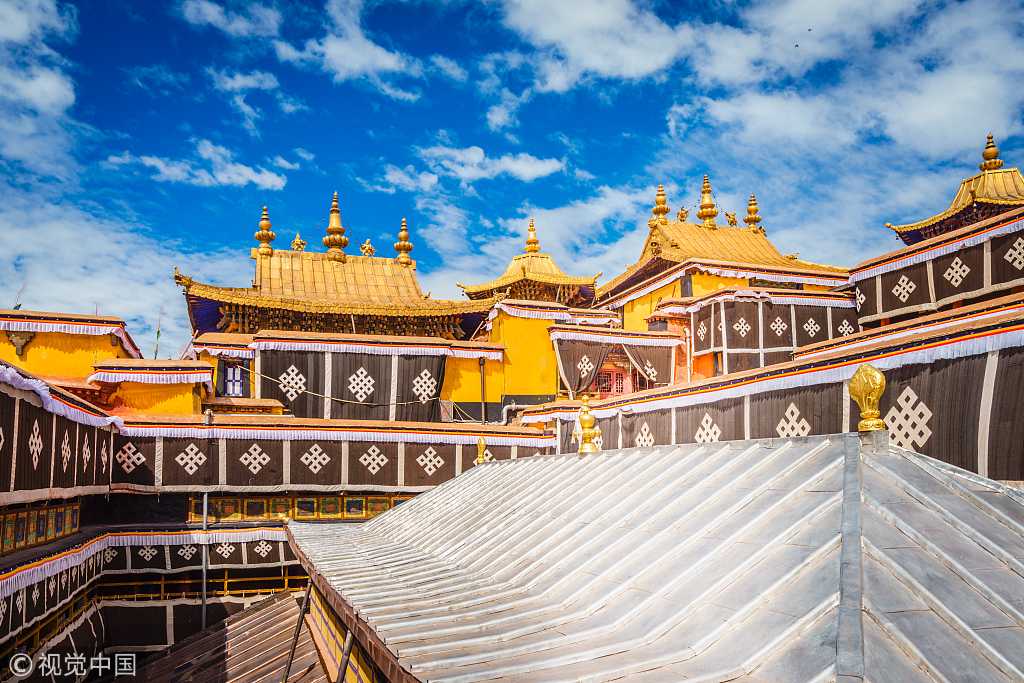
The golden dome of the Potala Palace. /VCG Photo
The golden dome of the Potala Palace. /VCG Photo
Travel information
To protect the palace, the local administration has limited the number of tickets per day to 5,000 during the holiday season, meaning visitors have to reserve their tickets in advance.
Visitors should dress respectfully and take off hats and sunglasses at the entrance of the palace as this is a sacred site. A security check at the entrance is a must for tourists as no water or lighters are allowed in.
Usually, it costs 200 yuan from May to October and 100 yuan the rest of the year. There are more than 30 sites to visit on the route, so make sure to plan ahead so you don't waste time. Remember, in the busy season, every trip lasts a maximum of one hour.
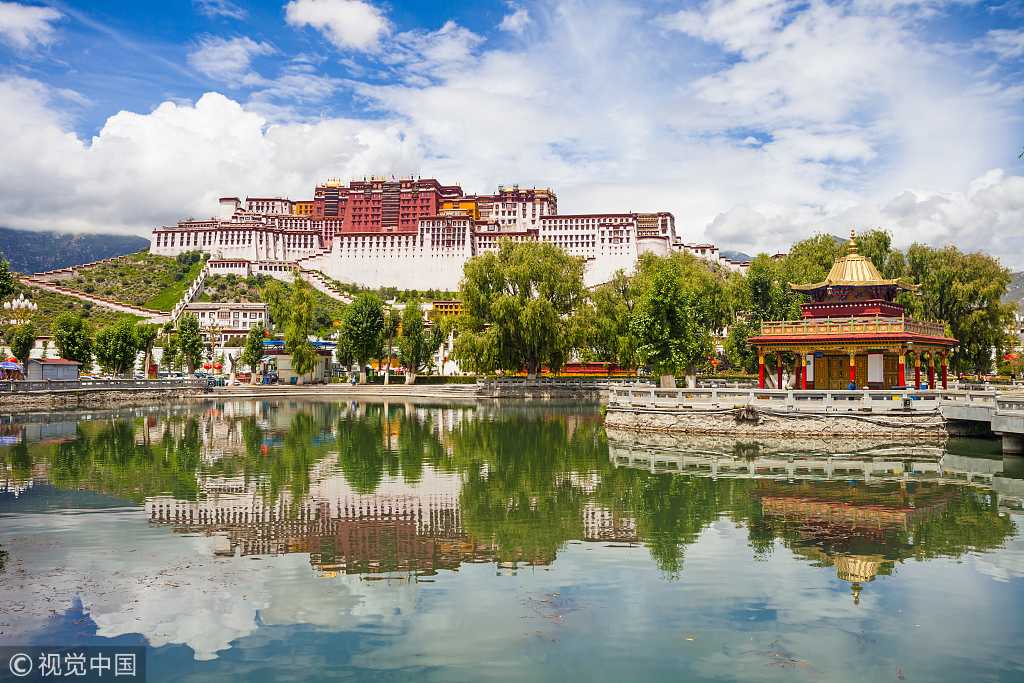
View of the Potala Palace. /VCG Photo
View of the Potala Palace. /VCG Photo
It is prohibited to take photos inside the palace due to the sacred nature of the building and the artworks, although photos are allowed outside the building.
Preparing for lots of walking at a high altitude is a necessity. Usually, tourists have to climb more than 1,000 steps up to the palace due to the fact that the palace is at 3,700 meters above the sea level. We recommend people take an oxygen tank with them before climbing.
Transportation
Travelers can take an airport shuttle bus from Gonggar Airport to Minhangju Bus Stop to access the palace. If visitors arrive at Lhasa Railway Station, they can take bus No.13 and get off at Yaowangshan Caishichang Bus Stop.
So far, the best railway choice for entering Tibet is by Qinghai-Tibet Railway.
With its abundant historical relics, it serves as a palace, castle and temple. The unique geographical advantage and rich essence of history and religions have made the palace a popular spot to embrace the region's culture.
2565km

SITEMAP
Copyright © 2018 CGTN. Beijing ICP prepared NO.16065310-3
Copyright © 2018 CGTN. Beijing ICP prepared NO.16065310-3